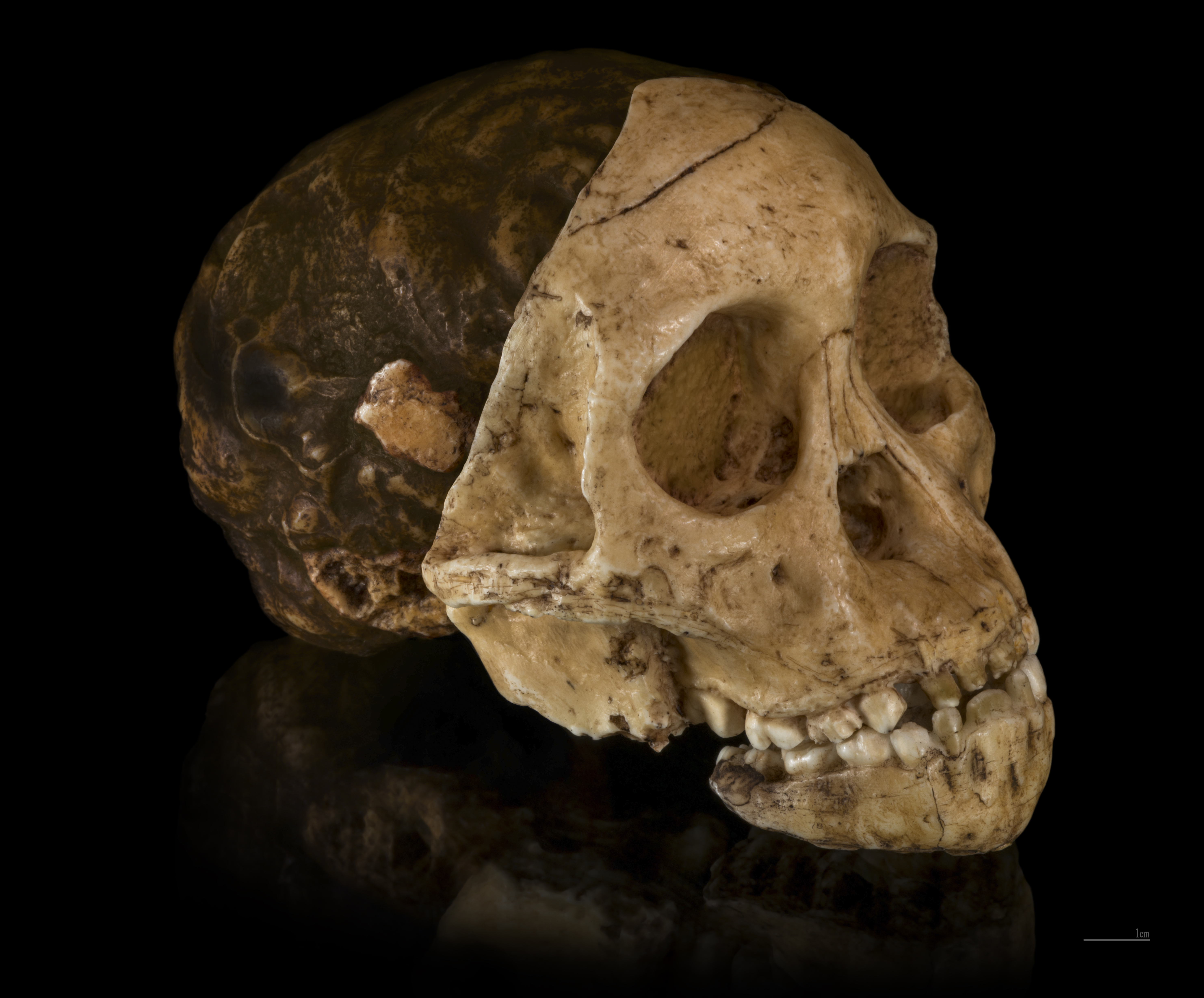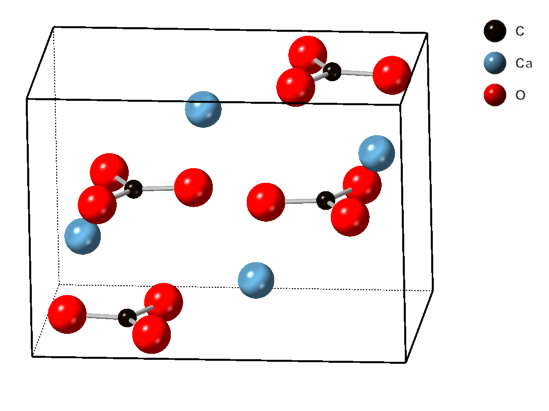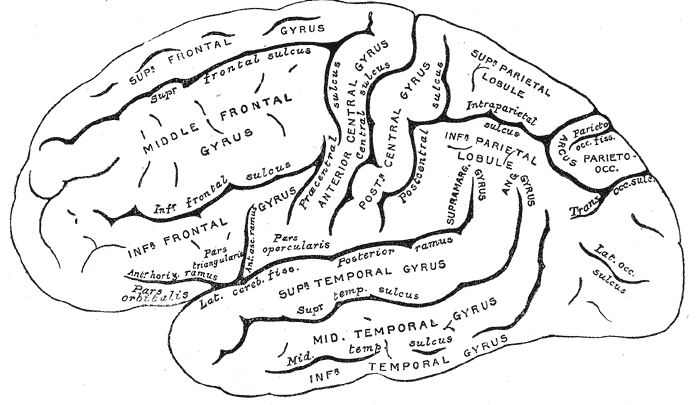|
Endocast
An endocast is the internal cast of a hollow object, often referring to the cranial vault in the study of brain development in humans and other organisms. Endocasts can be artificially made for examining the properties of a hollow, inaccessible space, or they may occur naturally through fossilization. Cranial endocasts Artificial casts Endocasts of the inside of the neurocranium (braincase) are often made in paleoanthropology to study brain structures and hemispheric specialization in extinct human ancestors. While an endocast can not directly reveal brain structure, it can allow scientists to gauge the size of areas of the brain situated close to the surface, notably Wernicke's and Broca's areas, responsible for interpreting and producing speech. Traditionally, the casting material is some form of rubber or rubber-like material. The openings to the brain cavity, except for the ''foramen magnum'', are closed, and the liquid rubber is slushed around in the empty cranial vaul ... [...More Info...] [...Related Items...] OR: [Wikipedia] [Google] [Baidu] |
Taung Child
The Taung Child (or Taung Baby) is the fossilised skull of a young ''Australopithecus africanus''. It was discovered in 1924 by quarrymen working for the Northern Lime Company in Taung, South Africa. Raymond Dart described it as a new species in the journal ''Nature'' in 1925. The Taung skull is in repository at the University of Witwatersrand. Dean Falk, a specialist in brain evolution, has called it "the most important anthropological fossil of the twentieth century." Description The Taung Child was originally thought to have been about six years old at death because of the presence of deciduous teeth, but is now believed to have been about three or four, based on studies of rates of enamel deposition on the teeth. There was some debate over the age of the child, initially because it was unclear if they grew at the speed of a human, or of an ape. Compared to an ape, they would have been aged about 4 years, and compared to a human, they would have been aged around 5–7 y ... [...More Info...] [...Related Items...] OR: [Wikipedia] [Google] [Baidu] |
Acrocanthosaurus Brain
''Acrocanthosaurus'' ( ; ) is a genus of carcharodontosaurid dinosaurs that existed in what is now North America during the Aptian and early Albian stages of the Early Cretaceous, from 113 to 110 million years ago. Like most dinosaur genera, ''Acrocanthosaurus'' contains only a single species, ''A. atokensis''. It had a continent-wide range, with fossil remains known from the U.S. states of Oklahoma, Texas, and Wyoming in the west and Maryland in the east. However, most of these remains are assigned to the species based on the assumption that ''Acrocanthosaurus'' is the only large carcharodontosaurid from North America during this time, and the possibility exists that some referred specimens could represent distinct taxa. ''Acrocanthosaurus'' was a bipedal predator. As the name suggests, it is best known for the high neural spines on many of its vertebrae, which most likely supported a ridge of muscle over the animal's neck, back, and hips. ''Acrocanthosaurus'' was one of the ... [...More Info...] [...Related Items...] OR: [Wikipedia] [Google] [Baidu] |
Tyrannosaurus Brain Aus
''Tyrannosaurus'' () is a genus of large theropod dinosaur. The type species ''Tyrannosaurus rex'' ( meaning 'king' in Latin), often shortened to ''T. rex'' or colloquially t-rex, is one of the best represented theropods. It lived throughout what is now western North America, on what was then an island continent known as Laramidia. ''Tyrannosaurus'' had a much wider range than other tyrannosaurids. Fossils are found in a variety of geological formations dating to the latest Campanian-Maastrichtian ages of the late Cretaceous period, 72.7 to 66 million years ago, with isolated specimens possibly indicating an earlier origin in the middle Campanian. It was the last known member of the tyrannosaurids and among the last non- avian dinosaurs to exist before the Cretaceous–Paleogene extinction event. Like other tyrannosaurids, ''Tyrannosaurus'' was a bipedal carnivore with a massive skull balanced by a long, heavy tail. Relative to its large and powerful hind limbs, the f ... [...More Info...] [...Related Items...] OR: [Wikipedia] [Google] [Baidu] |
Fossil
A fossil (from Classical Latin , ) is any preserved remains, impression, or trace of any once-living thing from a past geological age. Examples include bones, shells, exoskeletons, stone imprints of animals or microbes, objects preserved in amber, hair, petrified wood and DNA remnants. The totality of fossils is known as the ''fossil record''. Though the fossil record is incomplete, numerous studies have demonstrated that there is enough information available to give a good understanding of the pattern of diversification of life on Earth. In addition, the record can predict and fill gaps such as the discovery of '' Tiktaalik'' in the arctic of Canada. Paleontology includes the study of fossils: their age, method of formation, and evolutionary significance. Specimens are sometimes considered to be fossils if they are over 10,000 years old. The oldest fossils are around 3.48 billion years to 4.1 billion years old. Early edition, published online before prin ... [...More Info...] [...Related Items...] OR: [Wikipedia] [Google] [Baidu] |
Paleoanthropology
Paleoanthropology or paleo-anthropology is a branch of paleontology and anthropology which seeks to understand the early development of anatomically modern humans, a process known as hominization, through the reconstruction of evolutionary kinship lines within the family Hominidae, working from biological evidence (such as petrified skeletal remains, bone fragments, footprints) and cultural evidence (such as stone tools, artifacts, and settlement localities). The field draws from and combines primatology, paleontology, biological anthropology, and cultural anthropology. As technologies and methods advance, genetics plays an ever-increasing role, in particular to examine and compare DNA structure as a vital tool of research of the evolutionary kinship lines of related species and genera. Etymology The term paleoanthropology derives from Greek palaiós (παλαιός) "old, ancient", ánthrōpos (ἄνθρωπος) "man, human" and the suffix -logía (-λογία) "study of". ... [...More Info...] [...Related Items...] OR: [Wikipedia] [Google] [Baidu] |
Tyrannosaurus
''Tyrannosaurus'' () is a genus of large theropod dinosaur. The type species ''Tyrannosaurus rex'' ( meaning 'king' in Latin), often shortened to ''T. rex'' or colloquially t-rex, is one of the best represented theropods. It lived throughout what is now western North America, on what was then an island continent known as Laramidia. ''Tyrannosaurus'' had a much wider range than other tyrannosaurids. Fossils are found in a variety of geological formations dating to the latest Campanian-Maastrichtian ages of the late Cretaceous period, 72.7 to 66 million years ago, with isolated specimens possibly indicating an earlier origin in the middle Campanian. It was the last known member of the tyrannosaurids and among the last non- avian dinosaurs to exist before the Cretaceous–Paleogene extinction event. Like other tyrannosaurids, ''Tyrannosaurus'' was a bipedal carnivore with a massive skull balanced by a long, heavy tail. Relative to its large and powerful hind limbs, ... [...More Info...] [...Related Items...] OR: [Wikipedia] [Google] [Baidu] |
Holocephali
Holocephali (Sometimes spelled Holocephala; Romanization of Greek, Greek for "complete head" in reference to the fusion of Palatoquadrate, upper jaw with the rest of the skull) is a Subclass (biology), subclass of Chondrichthyes, cartilaginous fish. While the only living holocephalans are three families within a single Order (biology), order which together are commonly known as chimaeras, the group includes many extinct orders and was far more diverse during the Paleozoic and Mesozoic Era (geology), eras. The earliest known fossils of holocephalans date to the Middle Devonian period, and the group likely reached its peak diversity during the following Carboniferous period. Molecular clock studies suggest that the subclass diverged from its closest relatives, Elasmobranchii, elasmobranchs such as sharks and Batomorphi, rays, during the Early Devonian or Silurian period. Extinct holocephalans are typically divided into a number of orders, although the interrelationships of these gro ... [...More Info...] [...Related Items...] OR: [Wikipedia] [Google] [Baidu] |
Dinosaur
Dinosaurs are a diverse group of reptiles of the clade Dinosauria. They first appeared during the Triassic Geological period, period, between 243 and 233.23 million years ago (mya), although the exact origin and timing of the #Evolutionary history, evolution of dinosaurs is a subject of active research. They became the dominant terrestrial vertebrates after the Triassic–Jurassic extinction event 201.3 mya and their dominance continued throughout the Jurassic and Cretaceous periods. The fossil record shows that birds are feathered dinosaurs, Evolution of birds, having evolved from earlier Theropoda, theropods during the Late Jurassic epoch, and are the only dinosaur lineage known to have survived the Cretaceous–Paleogene extinction event approximately 66 mya. Dinosaurs can therefore be divided into avian dinosaurs—birds—and the extinct non-avian dinosaurs, which are all dinosaurs other than birds. Dinosaurs are varied from taxonomy (biology), taxonomic, ... [...More Info...] [...Related Items...] OR: [Wikipedia] [Google] [Baidu] |
Aragonite
Aragonite is a carbonate mineral and one of the three most common naturally occurring crystal forms of calcium carbonate (), the others being calcite and vaterite. It is formed by biological and physical processes, including precipitation from marine and freshwater environments. The crystal lattice of aragonite differs from that of calcite, resulting in a different crystal shape, an orthorhombic crystal system with acicular crystal. Repeated twinning results in pseudo-hexagonal forms. Aragonite may be columnar or fibrous, occasionally in branching helictitic forms called ''flos-ferri'' ("flowers of iron") from their association with the ores at the Carinthian iron mines. Occurrence The type location for aragonite is Molina de Aragón in the Province of Guadalajara in Castilla-La Mancha, Spain, for which it was named in 1797. Aragonite is found in this locality as cyclic twins inside gypsum and marls of the Keuper facies of the Triassic. This type of aragoni ... [...More Info...] [...Related Items...] OR: [Wikipedia] [Google] [Baidu] |
Gyrus
In neuroanatomy, a gyrus (: gyri) is a ridge on the cerebral cortex. It is generally surrounded by one or more sulci (depressions or furrows; : sulcus). Gyri and sulci create the folded appearance of the brain in humans and other mammals. Structure The gyri are part of a system of folds and ridges that create a larger surface area for the human brain and other mammalian brains. Because the brain is confined to the skull, brain size is limited. Ridges and depressions create folds allowing a larger cortical surface area, and greater cognitive function, to exist in the confines of a smaller cranium. Development The human brain undergoes gyrification during fetal and neonatal development. In embryonic development, all mammalian brains begin as smooth structures derived from the neural tube. A cerebral cortex without surface convolutions is lissencephalic, meaning 'smooth-brained'. As development continues, gyri and sulci begin to take shape on the fetal brain, with deepe ... [...More Info...] [...Related Items...] OR: [Wikipedia] [Google] [Baidu] |
Merycoidodontoidea
Merycoidodontoidea, previously known as "oreodonts" or "ruminating hogs," are an extinct Superfamily (taxonomy), superfamily of prehistoric cud-chewing artiodactyls with short faces and fang-like canine teeth. As their name implies, some of the better known forms were generally Domestic pig, hog-like, and the group has traditionally been placed within the Suina (Suinae, pigs, peccaries and their ancestors), though some recent work suggests they may have been more closely related to camels.Spaulding, M., O'Leary, M.A. & Gatesy, J. (2009): Relationships of Cetacea (Artiodactyla) Among Mammals: Increased Taxon Sampling Alters Interpretations of Key Fossils and Character Evolution. ''PLoS ONE'' no 4(9): e7062.article/ref> "Oreodont" means "mountain teeth," referring to the appearance of the Molar (tooth), molars. Most oreodonts were sheep-sized, though some genera grew to the size of cattle. They were heavy-bodied, with short even-toed ungulate, four-toed hoof, hooves and comparatively ... [...More Info...] [...Related Items...] OR: [Wikipedia] [Google] [Baidu] |










